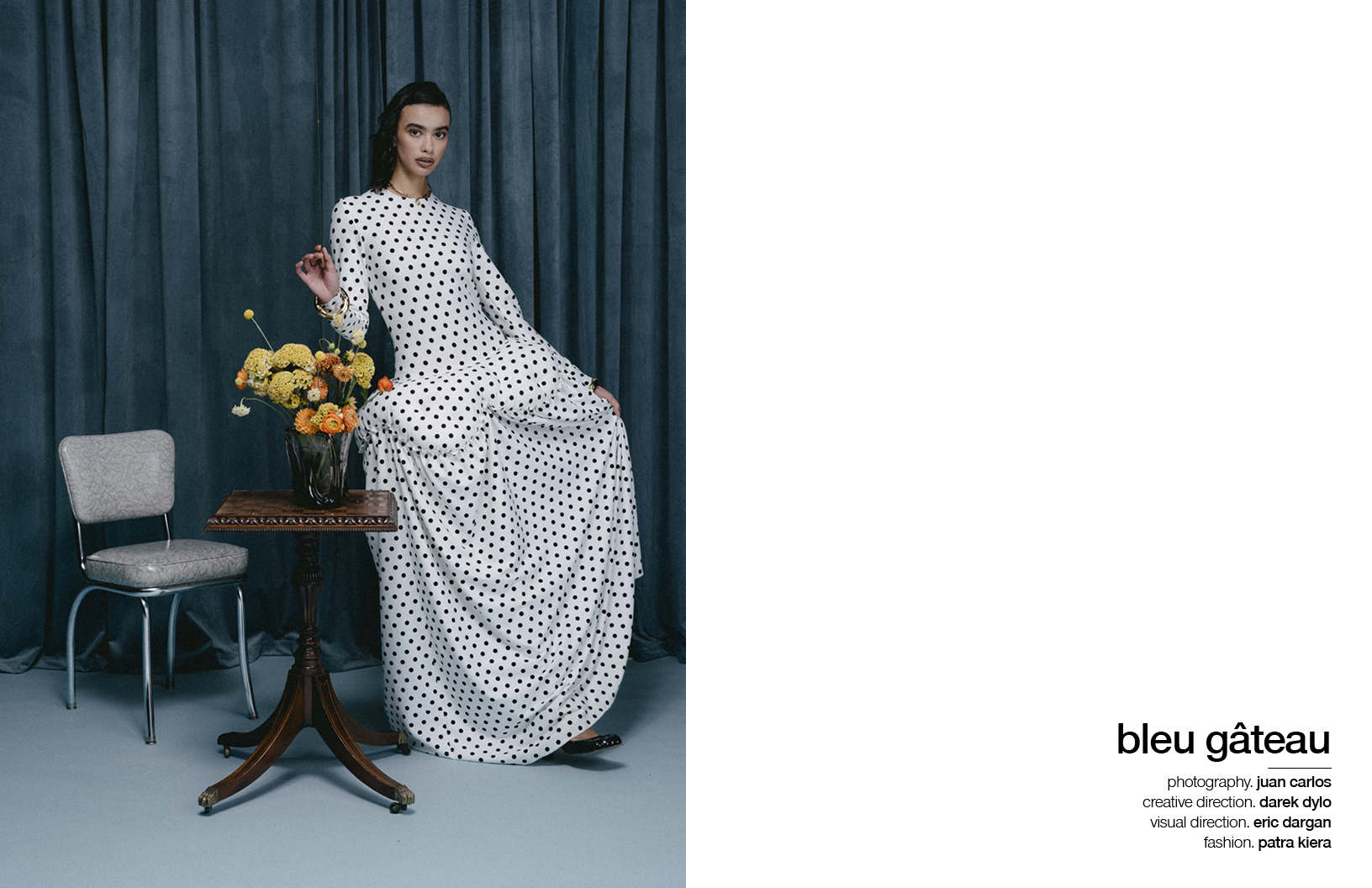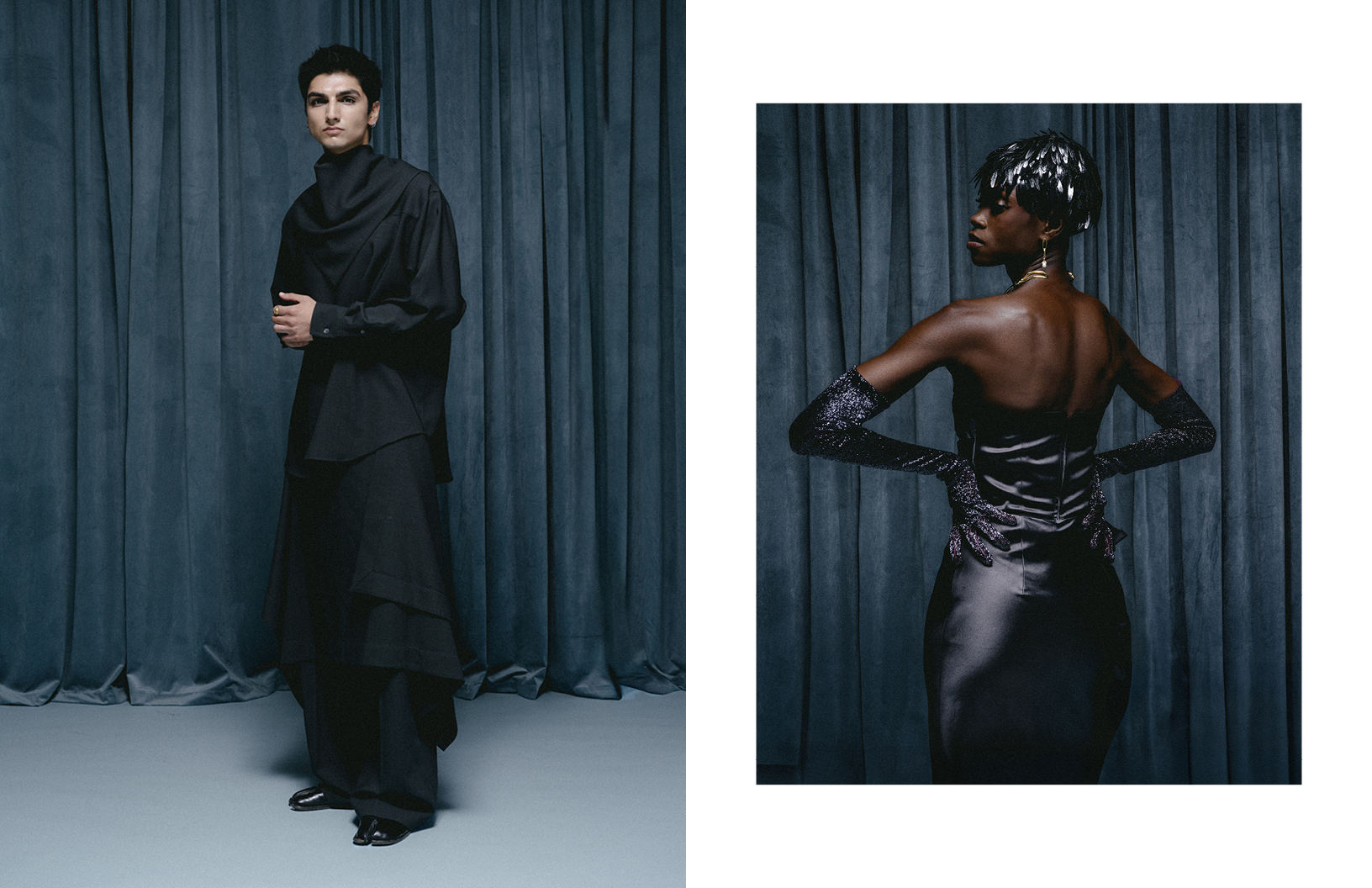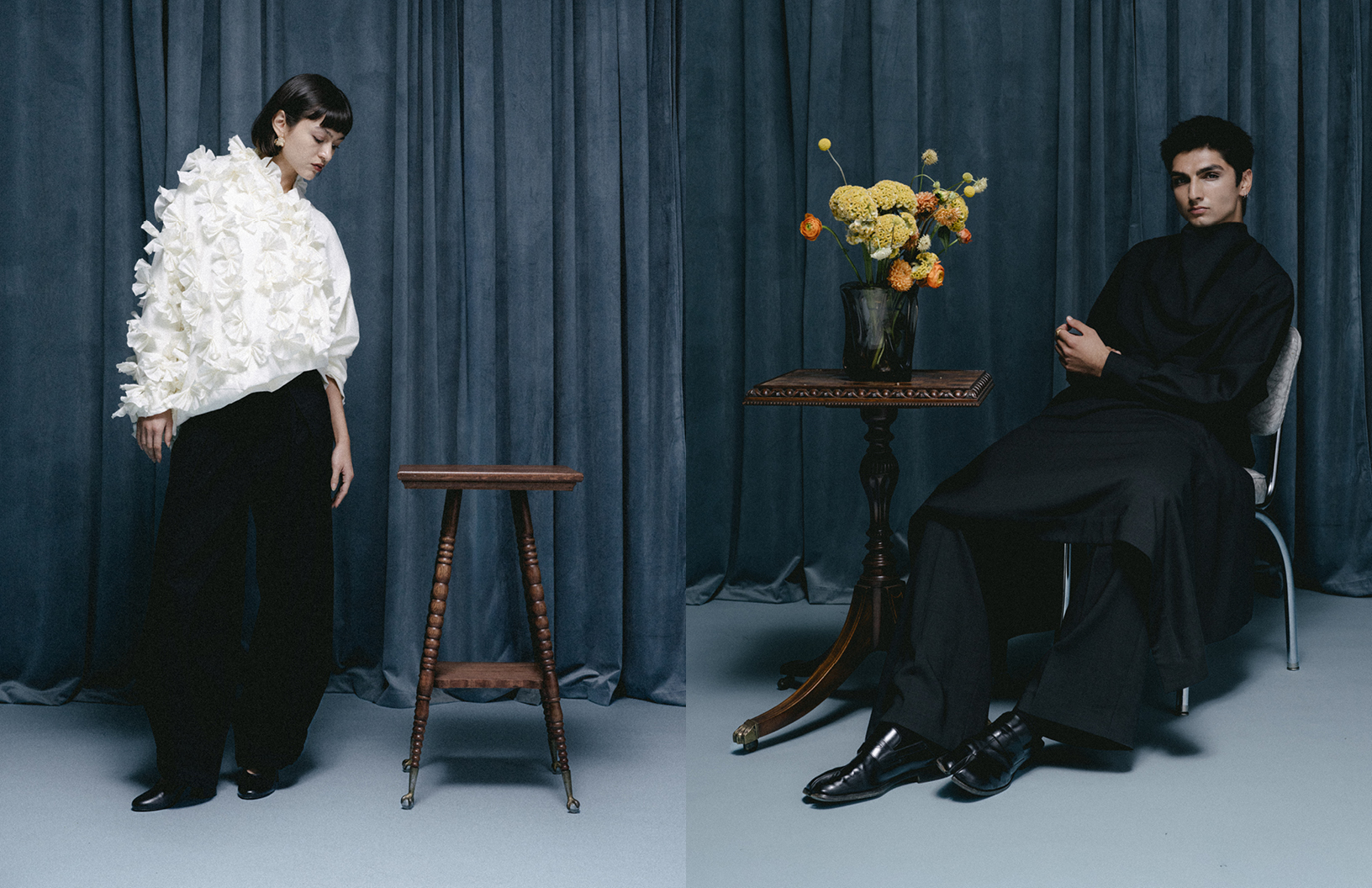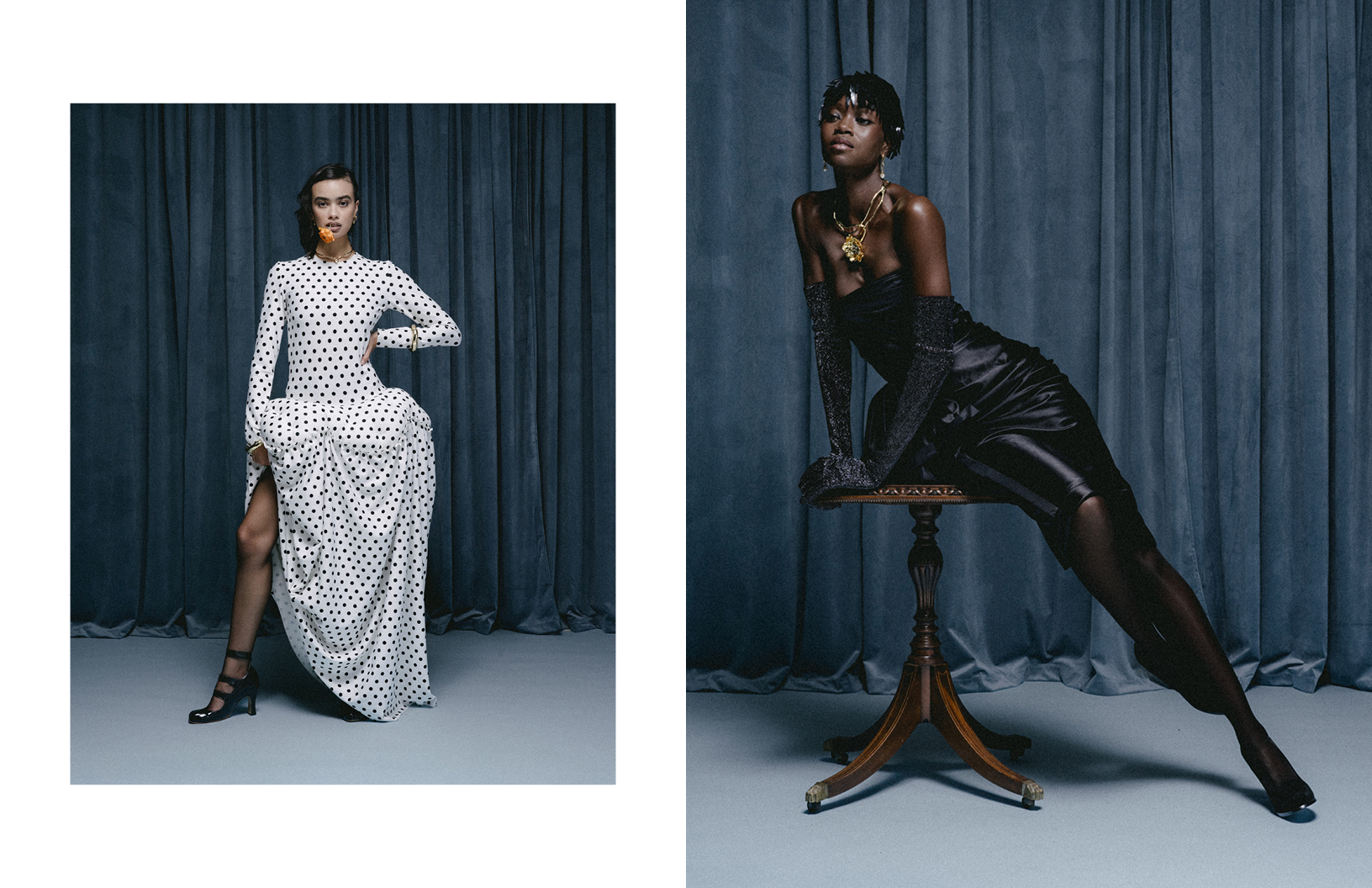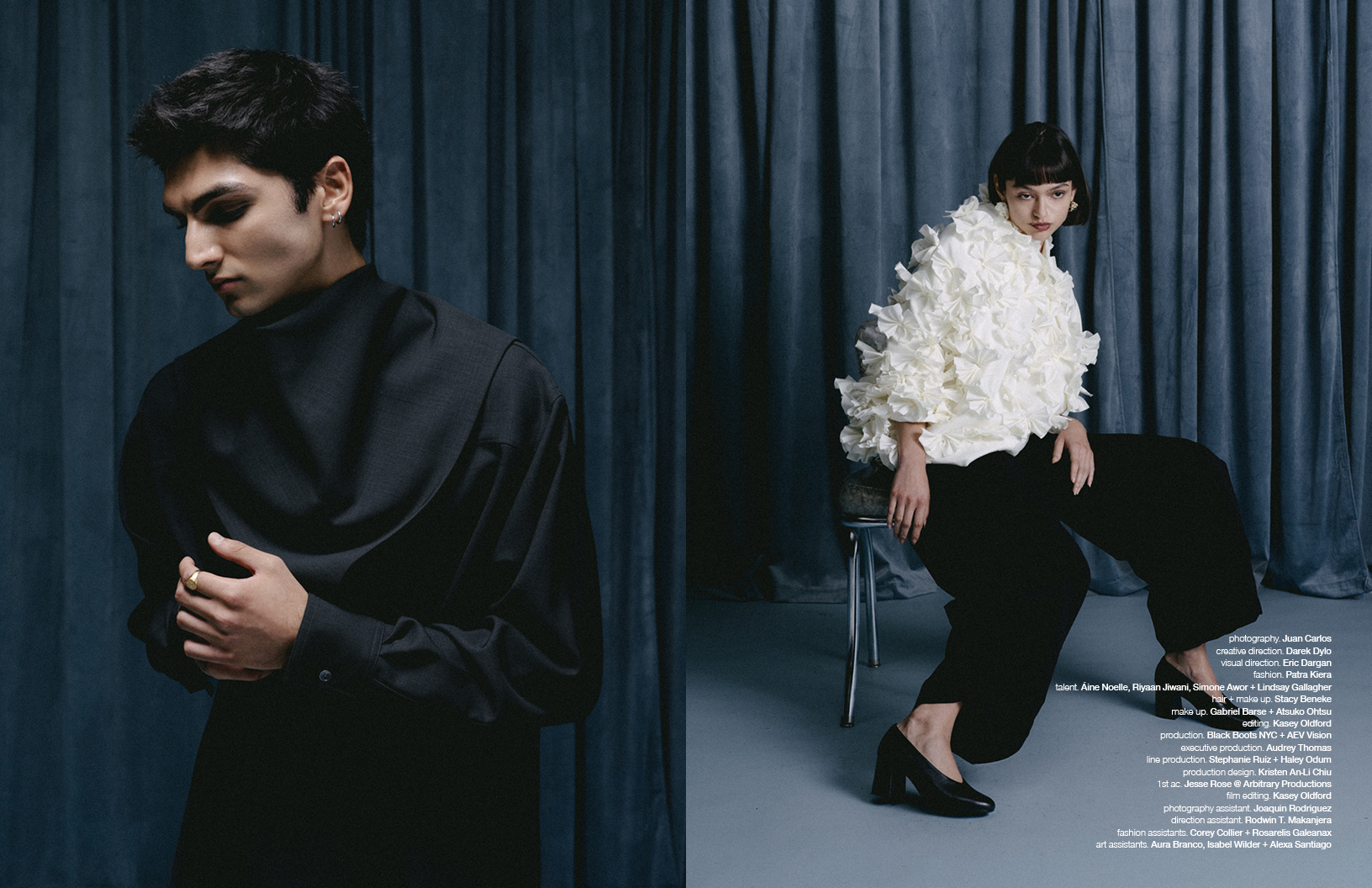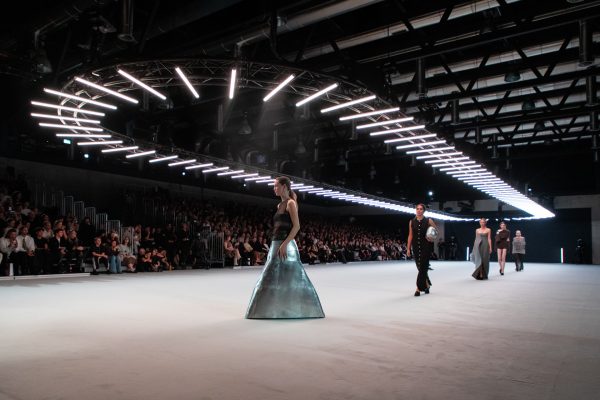Today, colourful socks are ubiquitous. Themed socks line the shelves of everywhere from bookstores to airports, and even in professional environments, fun socks break the routine by giving the wearer a unique and personalised flair. This was not the case, however, when Happy Socks founders Mikael Söderlindh and Viktor Tell launched their brand in 2008.
After realising the potential of socks created with design at the forefront, the duo began crafting socks of all shades, in the process building a new market from the ground up. As evident in the Happy Socks name, the team always designed with happiness in mind, seeing the socks not so much as a fashion piece but as a way to impart the duo’s indomitable joy and spirit into every Happy Socks wearer. Almost ten years later, it’s safe to say their mission has been a success: Happy Socks are a worldwide smash hit with around 10,000 stores selling their products globally.
As the brand expands its retail stores to Germany, Schön! spoke with Söderlindh and Tell about their move to Los Angeles, their upcoming Christmas campaign with Macaulay Culkin, and how they’re looking to reshape retail like they reshaped the sock market.

We’ll begin more broadly then return to socks. You opened a store and studio in Los Angeles called “The Rabbit Hole” earlier this year. Why did you open this creative hub?
Viktor Tell: A company like us, we’ve evolved a lot in the last eleven years since we started. We felt it was a good thing to have a small office again, kind of like when we started, just to elevate the creativity and be very free while at the same time having a look at the company from a different view, a different angle.
Mikael Söderlindh: The David Hasselhoff campaign is one example of that. We came up with the idea when we were launching swimwear. We were sitting and talking about who would be the best person to get a pair of swim trunks on, who you would think of on a beach. And I was like, Baywatch. David Hasselhoff. What if we took off his red trunks and put some Happy Socks on? So being in Los Angeles, only working with developing creative ideas, means we can go to lunch with him the next day. It’s not as difficult as being in Sweden saying, “Okay, I’m going to be in Los Angeles in two weeks, let’s set up a meeting.” It’s like, “You know what? I want to do it now.” And in two months, we’ve done the campaign. We’re really where the talent and action happens, and it feels like Los Angeles is where everybody is at the moment… In the U.S., everything is very fast. Everything is like social media, and social media is immediate. You don’t have these long [stretches of] time anymore. We’re working on a long-time schedule, but people are fast. If you send an email at ten o’clock at night in America, they answer. It’s not like Europe. The pace is so different.
When bringing a store to a new city, how do you get people in-store rather than just having them shop online?
M.S: I think we must share the Happy Socks experience in a retail store. I would rather see a person see Happy Socks in retail before they finding it online. I would see the stores as advertising.
V.T: A shop on a street is a place where people are already passing and seeing it. When they go online, they need to find it. It’s harder. When they see a store on the street like here in Berlin, they can find it later online.
So it’s a branding tool and a sales point. You see this with brands doing pop-ups as well.
M.S: That’s how we started. We started doing pop-ups, and we were getting crazy amounts of people experiencing the brand. We saw that e-com went up after doing pop-ups, then we started doing retail shops and e-com came up again after that, and then we opened retail stores in all the biggest tourist cities of the world — 120 Happy Socks stores and this number is increasing all the time.

As you expand, do you tailor your products to these local markets?
V.T: Happiness in design is very global, and we’ve always wanted to have a global mindset. We’re not a Swedish brand; we’re a global brand. But definitely, when we do more touristic areas, we’ve done, for example, a Bavarian sock for Oktoberfest, or a Paris sock for the Paris store. Gifting is something we can customise a little bit more.
M.S: As we’re in all these tourist locations with our retail shops, of course, we’re going to sell tourist products that are fun in the way of that city — a cab sock in New York, things like that. It’s an easy gift and a memory of New York.
And then it stays in the city? Or it could be sold anywhere?
M.S: No, we just keep it in that store, so it’s a little bit of a unique thing, to get that product in that store.
Now that you’re entering Berlin, how are you preparing for the German market? What makes a Berlin Happy Socks experience different from a New York one, for example?
V.T: We’ve been on the market since almost the beginning. In the first couple of years, we became global directly. But the retail, yeah, just lately, because we’ve really nailed the concept now. We’re opening not one store, but three in Berlin. I think we have three or four in Munich. We’ve seen that when we cluster them, it works a lot better, and it makes a bigger impact.
M.S: Definitely that. Before we had a partner selling our socks on the market, and now we sell directly on the market so we own the German market ourselves, and retail is how we experience the brand. We really see the difference with that. If we have a department store in one location and our retail store nearby, they start selling more once we open the retail store.
Amazing.
M.S: No, it’s not amazing, because the person has seen us on Instagram, they’ve seen the shop, and they go to a store to buy a sweater and they think, “Ah! I want Happy Socks, too!” That’s how it works. The more times you see the message of the brand, the better it works. It’s like a snowball. It’s crazy.
You say the Happy Socks promise is “making people happy all over the world.” So do you see yourself as a fashion brand or something else entirely?
V.T: That’s a very good question because we didn’t see ourselves as a fashion brand. We came into the fashion segment, but we saw ourselves as a design-driven brand. That’s also why we wanted to be unisex in the beginning. When you buy a table or chair, it’s not a male table or a female chair. It’s a design object that you like. And that’s what we wanted to spread. We wanted designs to be happy and colourful because we wanted to sell an emotion.
M.S: And it’s a bit pretentious to say we’re a “fashion sock” [laughs]. We’re a design sock. We put our efforts into making nice designs, and it’s up to the consumer to decide if they like the design or not. But we like the design, and we think the design makes us happy.
Nicely said. So then is it also that you adapt designs, for example, “This design works, this colour combination works, let’s repeat on that.”
V.T: Definitely.
M.S: A/B testing.
Let’s go back to the beginning. Do you remember the first design that became popular very fast? What was it?
M.S: A lot of dots. Dots have always been good for us [laughs].
It always returns. So what were some of the biggest hurdles when starting the brand? And how do those compare to what you face today?
M.S: It wasn’t — you always have a set of problems, but there weren’t any major hurdles to overcome. We thought it would develop as an e-com brand — that’s how we started it — but two weeks down the line we realised, “We have an online store, but why are people going to visit the store? Do they know about us? Can we afford to drive people here?” No. We needed to build a wholesale brand. And that’s how we built 15,000 stores selling our product today.
Wholesale runs at the same time? Or—
M.S: We built the wholesale, so that means that in all countries selling our product — we have 15,000 stores selling our product. That is the majority of our sales. So if someone sees it in KaDeWe or wherever, they buy there, and if they like the sock they might buy the second sock online. That’s how we built the brand: through wholesale. That was a hurdle, to get colourful socks into stores that had never carried colourful socks before.
V.T: You have a long-term goal, but you always have to adapt. Like we said, we wanted to be online when we realised we couldn’t be online. So we had to quickly adapt.
M.S: And we were the first brand to sell colourful designed socks. Nobody else was selling colourful designed socks as a brand when we started. We were the first brand that did it. Then everybody started, but we were the first to overcome that, to change the market.
To have people accept it and say, “I can wear this without being silly.”
M.S: Yeah.
V.T: The factory asked “why do you want to make kid socks for adults?” [Laughs] We needed to explain the concept. That was a hurdle.
Do you have any words of advice for those considering entering the industry?
M.S: We talked about that earlier. I wouldn’t want to do it now, twelve years later, with all that time and energy that you have to spend to get it done. I think you need to be exactly right with your time, place and social life to make it work. Going out, partying, meeting the people, meeting the buyers, meeting the press. I couldn’t do that again — I would die… But the commitment is important. Whatever you do, you have to commit yourself entirely. It’s not a side gig.
So do you think about trends when designing socks or do you just try to create your own path?
M.S: We always try to create our own path and then the trends come from other places, like architecture and design, not just fashion. That’s been a little bit of our success — we see trends in life rather than on the catwalk.
What cities are the most inspirational for you?
M.S: Tokyo is always up there. You cannot go there without being inspired. But honestly now, Los Angeles, where we’re living. It’s also very vibrant.

What can you tell us about the upcoming Naughty or Nice campaign with Macaulay Culkin?
M.S: We were sitting last year thinking, “What are we going to do for the holiday campaign?” We had a good idea, but for us, we needed to tie it into something so when you pass by a store or in a department store, we want you to be like, “Ah! Smart!”… What is the most searched film during the holidays on Google? Home Alone. Our generation remembers it, and it’s the film that’s shown around the world on Christmas. Doesn’t matter what country you’re in. That film is what’s on when it’s Christmas… Then we thought, it would be great to get his face, because then you’re going to think Christmas, Happy Socks product, Christmas, gift. And that’s how his face came up. And he hates Christmas, so it’s even better [laughs].
V.T: That’s the fun part. He can be himself. The campaign is Naughty or Nice, so if he wants to be naughty for Christmas, he can be, “Yeah, I like Christmas or whatever.” It’s very fun.
What else is coming up for Happy Socks that you can share with us?
V.T: The new stores in Berlin and Munich will be very fun, to get more presence here.
M.S: Sorry, I don’t know what I’m supposed to talk about or not [laughs]. But what we can share is that, from our perspective and being a small creative group, what we’re doing and what everybody is talking about is retail experience. What is retail experience? That is what we’re spending our time and money on: investing in what will hopefully be the coolest retail experience. We’re not really there yet, but we see that everybody is talking about the retail experience, and I think we really can do it because we’ve nailed it with our small, small shops. They’re like jewel boxes, candy stores — how can we explore that, not only with more stores but with something that’s like an experience?
Something where people walk away thinking, “That’s a cool store.”
M.S: Or “Is that a store?” That’s the question. If we start thinking about having these beautiful— It’s like putting a sign on a building. A store is the same thing, putting up a sign and talking about you. That’s what we’re trying to twist: what if we see these stores as a big advertising thing? That is what we are thinking of moving forward.
Discover more about Happy Socks’ “Naughty or Nice” collection here. Make sure to also follow the brand on Facebook, Instagram, Twitter and Snapchat.






























































